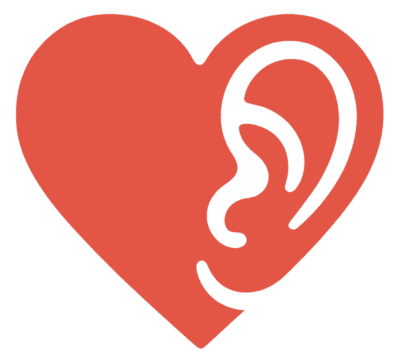Navigating the online world as a professional woman often feels like walking a tightrope. We want to convey our competence, our insights, our intelligence – because, let’s face it, we work hard for it. But there’s this underlying pressure, isn’t there? A fear of coming across as bragging, or intimidating, or somehow “too much.” I’ve scrolled through countless profiles, seeing incredibly smart women sometimes undersell themselves, or others fall into the trap of using empty buzzwords that somehow flatten their brilliance.
It strikes me that the most effective way to signal intelligence online isn’t through loud declarations or aggressive self-promotion. It’s often quieter, more nuanced. It’s woven into the way we communicate, the details we choose to share, and the curiosity we reveal. People pick up on these things, often unconsciously. True intelligence rarely needs a flashing neon sign.
So, how do we do it? How do we let our smarts shine through authentically without feeling like we’re trying too hard or stepping into those frustrating double standards? Let’s explore 4 subtle ways women can show intelligence on profiles – whether that’s LinkedIn, a portfolio site, a professional bio, or even a curated social media presence. These aren’t tricks; they’re about consciously choosing substance over surface.
Tip 1: Thoughtful Specificity Over Vague Buzzwords
Okay, let’s talk about buzzwords. “Strategic thinker,” “results-oriented,” “problem solver,” “innovative.” We see them everywhere. The problem? They’ve become background noise. They sound impressive, but without context, they mean very little. Anyone can claim these traits.
Intelligence often reveals itself in the details. Instead of relying on these empty descriptors, try showcasing the thinking behind the label through specific, concise examples.
- Instead of: “Highly strategic marketing professional.”
- Try (even briefly): “Developed a marketing strategy focused on [specific niche audience] by analyzing [specific type of data], leading to [quantifiable or specific qualitative outcome].”
You don’t need to write a full case study in your bio, obviously. But even a small, precise detail hints at a deeper level of understanding and execution. I remember reviewing applications once, and one candidate mentioned how she “streamlined a reporting process by identifying redundancies in data entry points across three teams.” That one specific detail told me more about her analytical skills than a whole paragraph of generic adjectives ever could.
Using precise language related to your field also matters. It shows you’re not just skimming the surface; you know your domain. It’s a subtle shift from claiming intelligence to actually demonstrating it through your grasp of specifics. It’s hard to nail this without sounding like you’re writing jargon, I get it, but clarity and precision often go hand-in-hand with sharp thinking.
Tip 2: Curated Sharing & Insightful Questions
What you choose to share and how you engage says a lot. Simply listing your own accomplishments can sometimes feel one-dimensional. Intelligence isn’t just about what you know; it’s also about your curiosity, your ability to connect ideas, and how you engage with the world around you.
- Share with Insight: Don’t just retweet or share an article. Add a sentence or two of your own commentary. What did you find interesting? What perspective does it add? What question does it raise for you? This transforms passive consumption into active engagement and critical thinking. It shows you’re processing information, not just passing it along. I always notice when someone shares something with a comment like, “This piece makes a good point about X, but I wonder if it overlooks the impact of Y…” Instantly, I see someone thinking critically.
- Ask Good Questions: Posing thoughtful, open-ended questions related to your field or interests is a powerful (and often underused!) signal of intelligence. It shows curiosity, a willingness to learn, and an engagement with complexity. It invites discussion rather than just stating facts. Think about questions that go beyond the obvious, that encourage deeper thought or explore nuances. It’s not about asking questions you already know the answer to; it’s about genuinely wanting to explore an idea further.
Let’s be real, finding genuinely interesting things to share or formulating truly insightful questions takes more effort than just hitting ‘like’. But it positions you as a thoughtful contributor to your field, not just a passive observer or relentless self-promoter.
Tip 3: Nuanced Language and Careful Word Choice
This one feels a bit meta – talking about language to show intelligence – but it’s crucial. The words we choose, and how we put them together, paint a picture.
- Precision Over Hype: Avoid overly simplistic, black-and-white statements or excessive hyperbole. Intelligence often lies in recognizing complexity and nuance. Can you articulate different facets of an issue? Can you use qualifiers appropriately (“often,” “sometimes,” “in certain contexts”) rather than making sweeping generalizations? This signals careful thought.
- Clarity and Conciseness: Rambling or using overly complex sentences just to sound smart often backfires. True intelligence frequently manifests as the ability to explain complex ideas clearly and concisely. Avoid unnecessary jargon, but use specific terminology accurately when it enhances understanding.
- Tone Matters: Does your writing sound considered? Reflective? Or is it purely reactive and emotional? While passion is great, a generally thoughtful and measured tone in your professional communications can subtly underscore your intelligence. (And yes, grammar and spelling count – not in a robotic, perfectionist way, but demonstrating care in communication generally correlates with careful thinking).

I still find myself tweaking sentences, trying to find that balance between sounding knowledgeable and sounding like I swallowed a thesaurus. It’s a continuous process. But paying attention to how you say things, not just what you say, makes a difference in perception. My personal pet peeve is seeing smart ideas undermined by careless or hyperbolic language.
Tip 4: Show, Don’t Just Tell, Your Curiosity & Learning
Anyone can stick “lifelong learner” in their bio. It’s another one of those phrases that has lost much of its impact through overuse. How do you show your intellectual curiosity and drive to learn without stating the obvious?
- Mention Specific Learning: Briefly reference things you’re actively exploring. “Currently learning [specific software/skill] to apply to [type of project].” “Fascinated by the recent research on [specific topic] discussed in [source/event].” “Reading [specific, relevant book] and finding the chapter on X particularly insightful.” These specifics make the claim of being a learner credible.
- Reference Your Process: When describing a project or achievement, you might subtly include how you approached learning or problem-solving. “Had to quickly get up to speed on [new area], so I dove into [specific resource/method]…” This shows adaptability and a proactive approach to knowledge gaps.
- Cite Thoughtfully (Where Appropriate): If you’re discussing a topic, mentioning a specific, credible source (an article, a study, a particular expert you follow) shows you engage with information critically and build upon existing knowledge. No need for formal citations in a profile, of course, but referencing where your ideas come from signals intellectual honesty.
I once went down a rabbit hole learning about the history of pigment development after seeing a documentary – completely unrelated to my main work, but mentioning that little journey in a casual post sparked some interesting conversations and, I think, showed a dimension beyond just my job title. It’s about revealing the active mind behind the profile. Showing that you’re engaged, curious, and constantly integrating new information is a powerful, subtle indicator of intelligence at work.
Bringing it Together for Subtle Ways Women Can Show Intelligence on Profiles
Ultimately, conveying intelligence online isn’t about performing or posturing. It’s about letting your genuine competence, curiosity, and thoughtful approach shine through in authentic ways. These 4 subtle ways women can show intelligence on profiles are really about leaning into substance – using specific examples, engaging thoughtfully, choosing words carefully, and showing your active mind.
It’s less about trying to ‘prove’ how smart you are and more about allowing your natural capabilities to resonate quietly but clearly. When you communicate with specificity, curiosity, and nuance, your intelligence speaks for itself. Trust that the right people – the clients, collaborators, and connections you want to attract – will notice.
Frequently Asked Questions
What overall strategies can women use to subtly convey their intelligence on profiles?
Women can demonstrate authenticity through specific examples, engaging thoughtfully with others, choosing nuanced language, and highlighting their ongoing learning and curiosity, thus allowing their genuine competence and intellect to shine naturally.
How can showing curiosity and learning without stating it explicitly be effective?
By mentioning specific things you’re exploring, describing your learning process, or referencing credible sources, you reveal an active, curious mind that continually seeks knowledge, making your intelligence evident through actions rather than words.
Why is careful word choice and nuanced language crucial in professional profiles?
Using precise, clear, and carefully selected words helps convey complex ideas thoughtfully and reflects a nuanced understanding, which subtly signals intelligence without relying on hype or jargon.
How can sharing insights and asking questions on social media reflect intelligence?
Adding thoughtful commentary to shared content and posing open-ended, insightful questions demonstrate curiosity, critical thinking, and engagement, which are clear indicators of intelligence.
What is the importance of specificity over buzzwords in demonstrating intelligence online?
Focusing on specific examples and details rather than vague buzzwords allows you to effectively showcase your actual skills and understanding, making your intelligence more tangible and credible.



